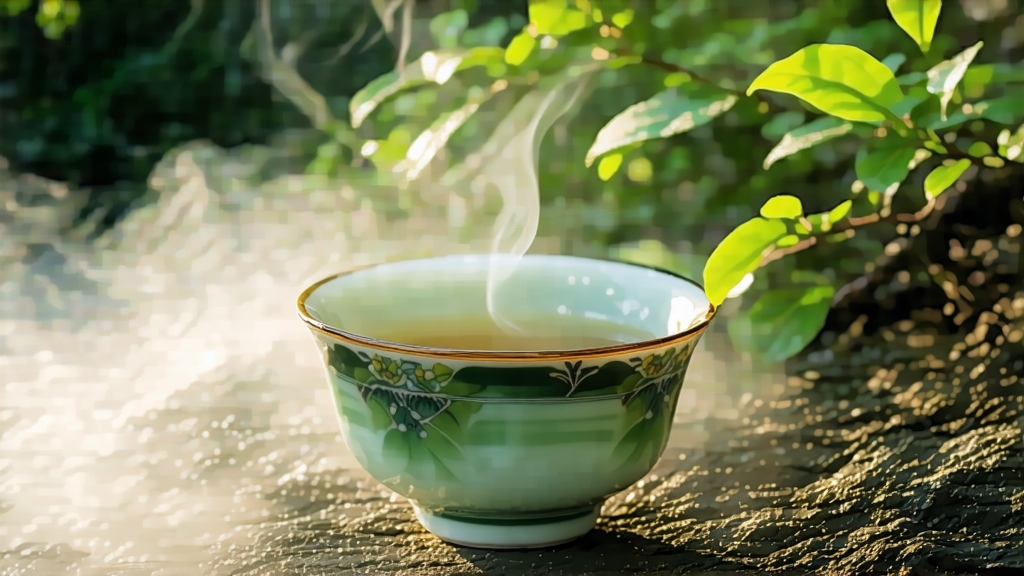
Rising like an emerald island from the clouds, the Alishan mountain range in central Taiwan has, for almost two centuries, coaxed tea bushes to produce one of the most fragrant oolongs on earth. International drinkers often meet “Alishan High-Mountain Oolong” as a bright, jade-green pellet that unfurls in hot water to release orchid, cream and ripe pineapple notes, yet behind this sensory firework lies a layered story of Qing-era migration, Japanese colonial agronomy, post-war craftsmanship and modern eco-innovation.
Historical Roots
The first Camellia sinensis var. sinensis cuttings reached Alishan around 1855, when Lin Feng-chi, a Fujianese settler, carried tea seed from the Wuyi Mountains in a bamboo tube lined with charcoal to keep them dry on the crossing. He planted them at 1 200 m near today’s Shizhuo village, noticing that morning mist lingered until noon, shading leaves from fierce subtropical sun. The resulting tea tasted naturally sweet, but it was not until 1895, under Japanese rule, that experimental stations selected the “Qing Xin” (Green Heart) cultivar for high altitude. The Japanese built narrow-gauge railways to haul leaf down the mountain, and by 1929 Alishan oolong was served to Emperor Hirohito during his Taiwan visit, earning the nickname “cloud tea” (kumocha). After 1949, Kuomintang veterans refined the partial-oxidation technique learned in Fujian, giving the tea its present tightly rolled半球形 (hemispherical) shape and signature alpine bouquet.
Terroir and Gardens
Alishan is not a single peak but a 300 km² massif whose summits climb to 2 600 m. Tea gardens sit between 1 000 m and 1 500 m, straddling the Tropic of Cancer yet chilled year-round by moist Pacific air. Diurnal swings of 15 °C slow photosynthesis, building amino acids such as L-theanine that translate into silky mouthfeel. Volcanic tuff soil, rich in iron and micro-pores, drains quickly while retaining humidity, forcing roots to dive deep for minerals. Indigenous red cypress and bamboo filter sunlight to 70 %, increasing chlorophyll and catechins that later yield floral volatiles during oxidation. Each spring and winter flush is kissed by “cloud waterfall” phenomena: vapor condenses on ridgelines at dawn and drips like rain even when skies are clear, providing natural irrigation without wetting leaf surfaces—an Eden for leafhoppers whose gentle bites further intensify aroma.
Cultivar Spectrum
While “Qing Xin” remains the benchmark, gardens now interplant Jin Xuan (TTES #12) for its natural milk tone and Tsui Yu (TTES #13) for bright jade liquor. Micro-lots of “Black Heart” oolong, an heirloom strain with dark red petioles, add wild honey notes but yield only 250 kg per hectare. Above 1 400 m, winter harvests sometimes display “quinquennial frost” character—leaves bronzed by chill stress, producing a rare white-peach nuance sought by Tokyo auctioneers.
Crafting the Cloud Leaf
Plucking begins at 5 a.m. when dew still weighs the leaf, lowering temperature and preserving turgor. Two leaves and a bud, snap-picked by thumbnail to avoid bruise, are placed in 6 kg bamboo baskets lined with banana fiber that wicks surface moisture. After a 90-minute mountain truck ride to the village factory, leaves are solar-withered on 20-mesh bamboo trays for 30 minutes under 26 °C morning sun, initiating enzymatic activity. Indoor withering follows: 6 °C cooled air is blown across troughs for 8 hours while artisans toss leaves in a 45 °C arc every 45 minutes—this “walking the green” encourages stem-water migration, equalizing moisture to 62 %. Oxidation is conducted in a pine-lit room kept at 80 % humidity; every 15 kg batch is wrapped in muslin and tumbled inside a rattan drum for 3 minutes, repeating eight times until edges redden to 30 %. A unique “cold kill-green” step halts oxidation: leaves enter a 300 °C drum for 90 seconds, then drop into a 5 °C stainless-steel chamber for rapid contraction, locking in floral esters. Rolling proceeds for 40 minutes under 70 kg pressure